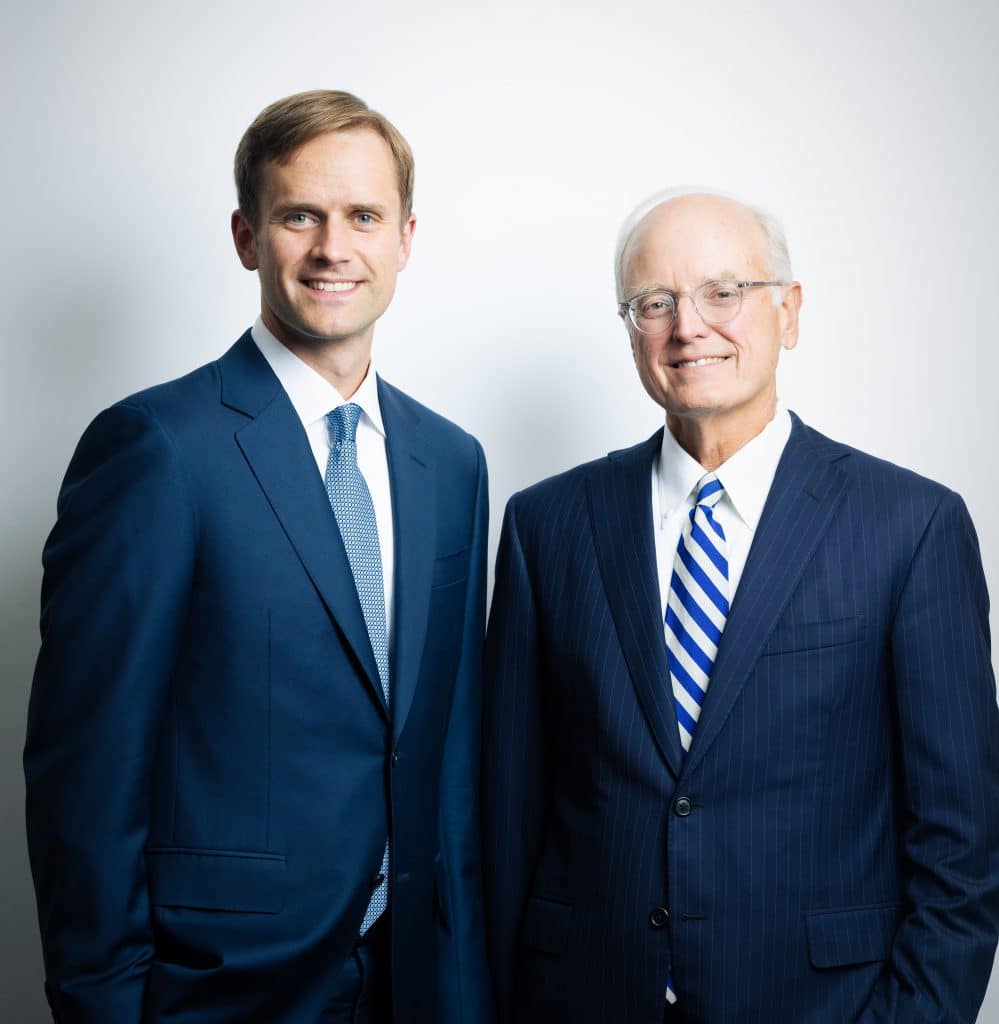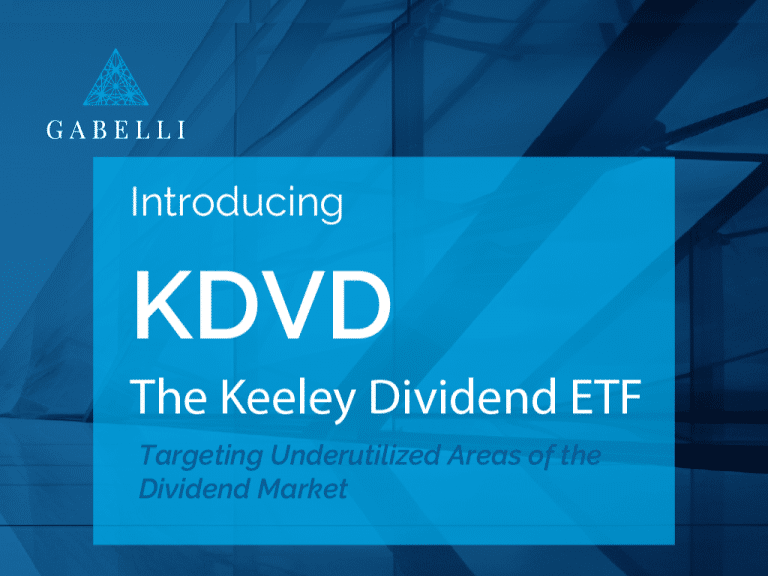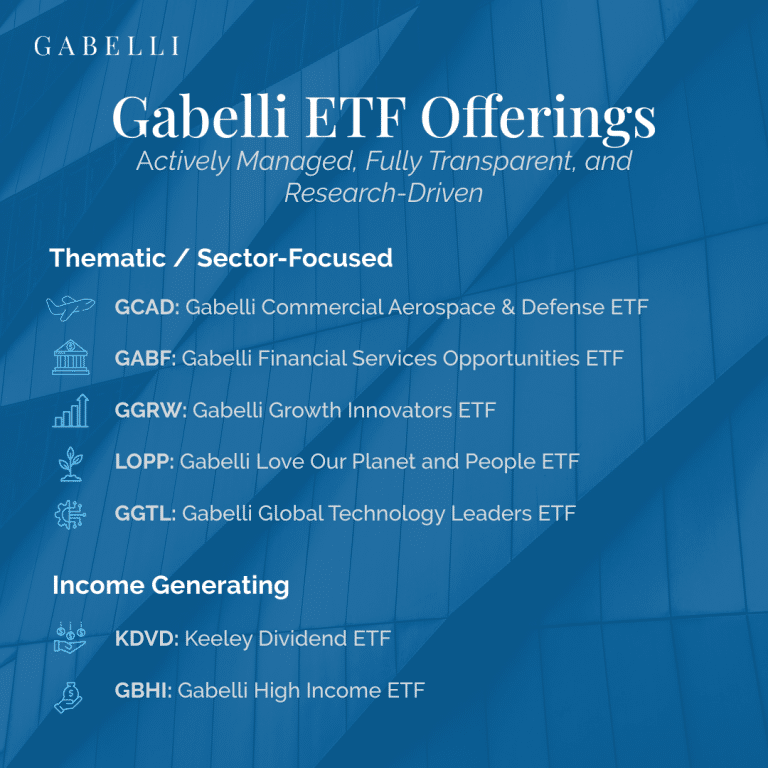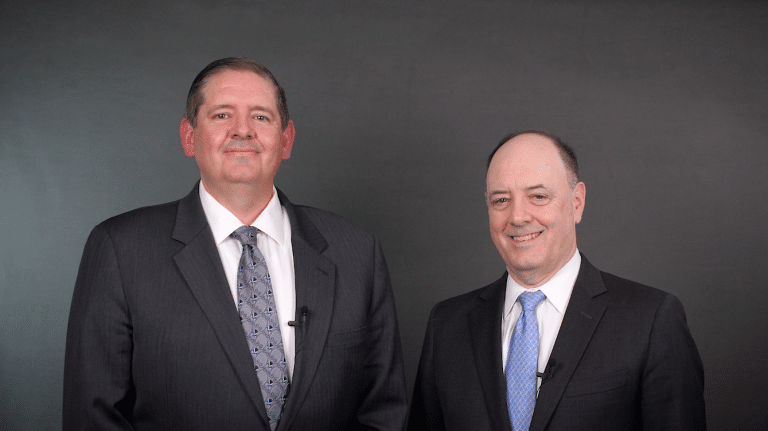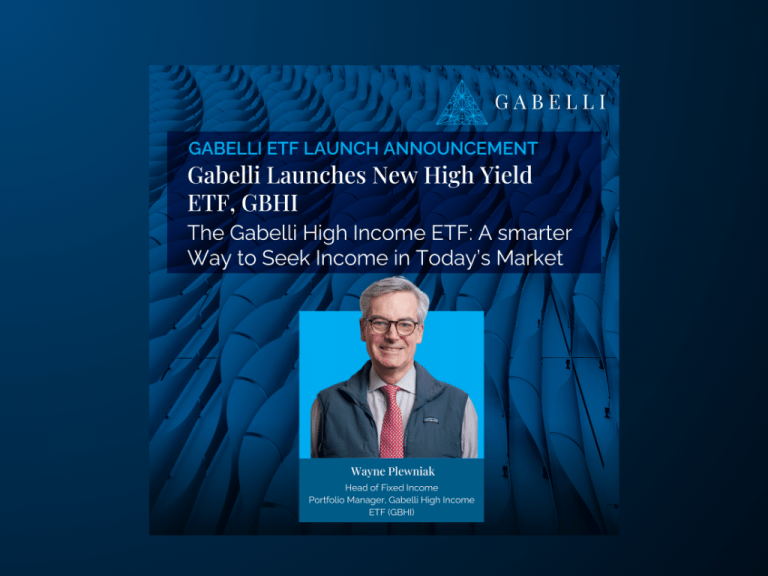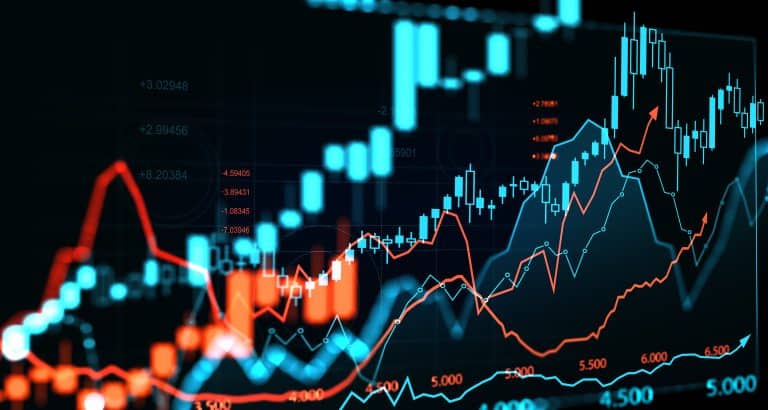3Q25 GABELLI GLOBAL GROWTH COMMENTARY
The direction of travel for many things in 3Q was “onward and upward”. Nowhere was this clearer than in markets, where the S&P 500 closed at all-time highs on 35% of all trading days (most in a quarter since 1998). In entertainment, Netflix’s global dominance advanced further with the Korean animated film KPop Demon Hunters, which became the service’s most-watched film ever with ~325mm views. In geopolitics, the Trump Administration made progress with six more trade deals, highlighted by new frameworks with the European Union and Japan. And in sports, Irishman Shane Lowry overcame a raucous New York crowd by holing a dramatic six-foot birdie putt to clinch the first European Ryder Cup win on US soil since 2012.
THE ECONOMY
In contrast to such decisive direction of the markets during the third quarter, US economic data was mixed. On one hand, softer labor market fundamentals and ongoing weakness in the manufacturing sector painted a picture of an economy going through a soft patch. On the other, various “soft data” indicators suggested sentiment is improving across both business and consumer sectors, and prospects for easier monetary policy could set up for accelerating growth trends ahead.
Beginning with the labor market, the Bureau of Labor Statistics’ widely followed Establishment Survey showed negative nonfarm payrolls growth in aggregate during June for the first time since 2020. This reading surfaced on a delayed basis in the form of a revision disclosed in the August payrolls report which found that the economy added fewer than 30k jobs per month over the latest three months – a meaningful slowdown compared with a ~170k monthly average in 2024. While some of this slowdown can be attributed to the public sector (which added no jobs in aggregate over the last three months), many private sector trends also look uninspiring. In particular, BLS data shows the manufacturing sector has shed jobs for four consecutive months and has not added jobs in aggregate over the last three years, leading some observers to conclude that the US remains in a “manufacturing recession”.
The BLS’s Job Openings and Labor Turnover Survey (JOLTS), which measures a comprehensive set of labor market fundamentals, continues to exhibit a sluggish environment of “low hires, low fires”. JOLTS estimates there are now fewer job vacancies per unemployed person than at any point since 2018 (excluding the early-COVID era), indicating it is more difficult for jobless people to get hired. Relatedly, the “quit rate” (percentage of workers voluntarily leaving a job) has fallen below 2% for the first time in nearly ten years (again, excluding the early-COVID era), suggesting workers are not finding more attractive employment options elsewhere. While the unemployment rate remains low in a historical context at just 4.3%, economists including San Francisco Fed President Mary Daly are coalescing around the view that further declines in job vacancies are likely to have pronounced adverse impacts on the Unemployment Rate, according to the Beveridge Curve in classical macroeconomic theory.
Non-government data similarly reflects weak hiring trends in the US over the last several months. The ADP National Employment Report showed a negative month-over-month change in jobs during June for the first time since 2019. Elsewhere, the Challenger Job Cuts report from outplacement firm Challenger, Gray & Christmas estimates hiring plans in the US are at the lowest level since 2010, while job cuts this year are pacing more than 60% higher year-over-year through August.
Compared with the consistently slow, and softening labor market data released during the third quarter, measures of US economic output have been a bit more encouraging. After two positive revisions, GDP accelerated to +3.8% in the second quarter. Additionally, Retail Sales as measured by the US Census Bureau have remained resilient of late, expanding in three consecutive months through the summer for the first time since late-2024. The latest company earnings cycle in the US similarly showed no signs of deterioration, with more than 80% of S&P 500 constituents beating revenue expectations – the best top-line “beat rate” since 2021.
On the cautious side, the aforementioned GDP figure reported for the second quarter may largely reflect tariff-related timing dynamics, as the gross private domestic investment component (private sector spend on new productive assets) fell quarter-over-quarter at the steepest pace in five years. Separately, US “manufacturing recession” dynamics were further evident in the Institute for Supply Management’s Purchasing Manager Index which has measured “contraction” in the sector in 34 of the last 36 months.
Trends on the inflation front have also been inconclusive, though no worse than expected, as Trump’s tariffs take effect. June’s Consumer Price Index showed some signs of tariff inflation in certain categories like furniture, appliances and apparel, though a further acceleration in subsequent reports has been limited. The Fed’s preferred inflation gauge, the “Core” Personal Consumption Expenditures Price Index, did rise during the third quarter to 2.9% year-over-year as of August, from 2.8% as of June. However, a temporary tariff-driven increase in inflation has been expected by Fed officials. The Summary of Economic Projections published by the Federal Open Market Committee (FOMC) at a September meeting projects a median expectation for core PCE inflation to exit the year at 3.1% year-over-year.
Speaking of the Fed, the FOMC voted last month 11-1 in favor of a 25bps reduction in the target Federal Funds Rate to 4.0%-4.25%, with recent Trump-appointee Stephen Miran, the lone dissenter, favoring a larger 50bps cut. This near-unanimous decision at the September meeting stands in contrast to an earlier July FOMC meeting, where officials were more divided and the decision to hold the policy rate unchanged was met with a rare “double-dissent” from two Fed Governors. Looking forward, Fed Chair Powell noted in an August speech that the Fed is now faced with a “challenging situation”, as still-elevated inflation creates tension against the recent slowdown in labor market fundamentals. As of this writing, the market is pricing in an 85% chance of two further rate cuts this year, while opinions on the rate path in 2026 and beyond diverge widely.
Economic fundamentals across Europe remain sluggish though stable, with recent soft data indicating potential for improvement following a “Framework on an Agreement on Reciprocal, Fair, and Balanced Trade” reached between the US and European Union in July. The Hamburg Commercial Bank’s Composite Purchasing Manager Index hit a 16-month high in September, led by strength across Spain, Germany, Ireland and Italy. France, on the other hand, remains plagued by political instability – after former Prime Minister Bayrou lost a no-confidence vote in Parliament and resigned in early-September, his successor resigned after less than four weeks in office, marking the shortest Prime Minister tenure in French history. This instability has spooked bond investors, with French sovereign yields now trading above Greek yields and at all-time “wides” to German yields.
The outlook in Japan has also improved somewhat following the announcement of a “Framework Agreement” for a trade deal with the US in July. Most recently, markets welcomed the election of new Prime Minister Takaichi in early October by the ruling Liberal Democratic Party. Takaichi ran for leadership on a policy platform headlined by fiscal spending increases and easy monetary policy – policies which have been digested by markets as “risk-friendly”. This leadership shift will have implications for the Bank of Japan, which has increased the policy rate three times in the current cycle (to 0.50% currently) and which has signaled intent to continue hiking given ongoing improvements in business sentiment, capex plans, and wage growth.
In China, domestic output remains subdued and consumer and business sentiment remain cautious given a still-weak property sector and trade uncertainty with the US. Loose monetary policy and fiscal stimulus programs have provided consumers and businesses some temporary reprieve, but recent estimates from the World Bank call for a further slowing in GDP growth next year.
FINANCIAL MARKETS
The bull market in US stocks broadened during the third quarter, with the S&P 500 notching 23 all-time high closes (the most for any quarter since 1998). The US Dollar stabilized following a double-digit decline in the DXY Index during the first six months of the year, and small caps outperformed large caps evidenced by the Russell 2000 Index hitting a new all-time high for the first time since 2021. That said, strength was broad-based with the MSCI All Country World Index, Dow Jones Industrial Average, and Nasdaq Composite also hitting new highs during the quarter.
The S&P 500 posted an 8% total return in 3Q, capping a 34% advance off the post-Liberation Day low set on April 8th. The 34% (and counting) increase in stocks ranks as a top five bull market rally over the last 65 years, and is particularly unique compared with other large stock market runs which have tended to overlap with the end of economic recessions. This time around, investors are excited by the combination of improving soft data (consumer confidence surveys, small business optimism, and CEO confidence indicators all up sharply from 2Q lows), prospects for easier monetary policy, productivity gains from artificial intelligence, and implications of a new US omnibus tax and spending bill which promises to drive accelerating growth in capital spending over the coming quarters.
Outside of equities, the benchmark ten-year US treasury yield ended 3Q at 4.15%, ~10bps lower vs. the start of the quarter given a backdrop of relatively benign inflation data and policy rate easing. Corporate credit spreads across the quality spectrum remain extremely tight by historical standards and continued to tighten during the quarter.
ARTIFICIAL INTELLIGENCE
At the risk of sounding like a broken record, the scale of investment in AI infrastructure, as well as the pace of technological innovation, continues to surpass expectations. The five largest cloud computing platforms (in order of size: Amazon Web Services, Microsoft Azure, Google Cloud Platform, Meta Platforms, and Oracle Cloud Infrastructure) have communicated capex plans for 2025 which aggregate to ~$380bn. This total has been revised 15% higher over the last quarter, 35% higher since the start of the year, and 75% higher compared with a year ago. This is an investment cycle of unprecedented scale which economists at Evercore ISI estimate contributed more than half of the overall US GDP growth during the first half of the year.
The natural questions in the face of such ambitious investment are: “Is this healthy?” “Are we in a bubble?” Indeed, Google Trends reveal that searches for “AI Bubble” increased more than 10x from the start of the year to a recent peak in August. Searches for “Dotcom Bubble” have shown a similar spike on Google, as investors and observers increasingly draw comparisons between the current environment and the Internet bubble of the late-1990s.
At face value, it is difficult to see close parallels in public stock market valuations today compared with the Dotcom Bubble of the late-1990s. To illustrate this point: the seven largest technology companies in the S&P 500 as of this writing trade on median / mean forward P/E multiples of 32x / 29x, respectively. This compares with median / mean forward P/E multiples of the seven largest S&P 500 technology companies at the end of 1999 of 70x / 84x, respectively. Thus, whether or not the stock market is in a “bubble” will likely depend on the extent to which earnings expectations prove achievable. This, in turn, will depend on the pace at which AI infrastructure can deliver financial returns, and on the utility that AI technology can provide more broadly.
In the third quarter we saw continued rapid adoption of major Chatbot services, with OpenAI’s ChatGPT disclosing more than 800mm weekly active users last month (up 5x year-over-year) and Perplexity disclosing 300mm search queries per week (up 3x since the start of the year). Elsewhere, Amazon management noted deployment of the one millionth robot across its warehouse footprint and said that 75% of all deliveries are now being assisted by robotics. Microsoft and JP Morgan were among many companies to cite significant cost savings being generated by AI, with both sizing $500mm+ annualized cost efficiencies thus far. We also started to hear signs that technological progress is nearing another inflection point, as Meta Platforms CEO Mark Zuckerberg told analysts on an earnings call in July that, “We’ve begun to see glimpses of our AI systems improving themselves. The improvement is slow for now, but undeniable.”
LOOKING FORWARD
Elevated valuations combined with uncertain economic fundamentals could manifest in an environment of relatively higher stock market volatility over the coming months, and our portfolio companies will not be immune to these disruptions. However, we have confidence that our emphasis on the world’s highest quality management teams, innovative products and business models, and differentiated products will serve us well.
PORTFOLIO OBSERVATIONS
The Gabelli Global Growth Fund returned 4% during the third quarter, compared with an 8% total return for the S&P 500 and a 7% total return for the MSCI All-Country World Index. Year-to-date through September 30th the fund returned 12.8%, compared with 14.8% for the S&P 500 and 17.1% for the MSCI All-Country World Index.
During the quarter we added one new position in Tesla, Inc. (1.1% of portfolio assets as of September 30th). We added to existing positions in Rheinmetall AG (1.2% position as of September 30th) and MercadoLibre (1% position as of September 30th). We eliminated a position in Chipotle Mexican Grill, which we believe is facing more challenging growth prospects ahead.
For the third quarter our top five contributors to performance (based upon price change and position size) were NVIDIA, Alphabet, Broadcom, Apple and GE Aerospace. The largest detractors from performance for the quarter were Netflix, Chipotle Mexican Grill, Intuitive Surgical, Intuit and Spotify.
At a sector level, we ended the quarter with overweight exposures in Information Technology (33% of portfolio assets compared with 27% in the MSCI All-Country World), Industrials (16% of portfolio assets compared with 11% in the benchmark) and Communications Services (14% of portfolio assets compared with 9% in the benchmark). Our largest sector underweights at quarter-end included Consumer Staples (1% of portfolio assets vs. 5% in the benchmark), Energy (0% of portfolio assets vs. 3% in the benchmark), Utilities (0% of portfolio assets vs. 2.5% in the benchmark), and Real Estate (0% of portfolio assets vs. 2% in the benchmark).
Our fund remains fairly concentrated, with positions in 46 companies as of the end of the quarter. Our top five holdings represent 28% of portfolio assets and our top ten holdings represent 45% of portfolio assets. We act like long-term owners of businesses in our portfolio and seek to maximize exposure to our best ideas. As a result of this approach we occasionally expect above average price volatility over shorter time periods though believe this is the optimal way to create value over the long term.
John T. Belton, CFA
Howard F. Ward, CFA
Howard Ward is GAMCO’s Co-Chief Investment Officer of Growth Equities and Global Growth Fund. John Belton is a Managing Director and Portfolio Manager for Gabelli Growth Innovators ETF.
As of June 30, 2025, affiliates of GAMCO Investors, Inc. beneficially owned less than 1% of all companies mentioned.
The Portfolio Manager’s views are subject to change at any time based on market and other conditions. The information in this posting represents the opinions of the individual Portfolio Manager and is not intended to be a forecast of future events, a guarantee of future results, or investment advice. Views expressed are those of the Portfolio Manager and may differ from those of other GAMCO officers, Portfolio Managers, other employees, or of the Firm as a whole. Because the investment personnel at GAMCO and our affiliates make individual investment decisions with respect to the client accounts that they manage, these accounts may have transactions inconsistent with the information contained in this posting.
Investors should carefully consider the investment objectives, risks, charges and expenses of the Fund before investing. The prospectus, which contains more complete information about this and other matters, should be read carefully before investing. To obtain a prospectus, please call 800 GABELLI or visit www.gabelli.com
Distributed by G.distributors, LLC, a registered broker dealer and member of FINRA
